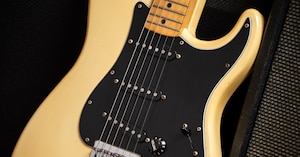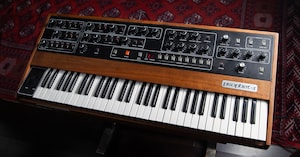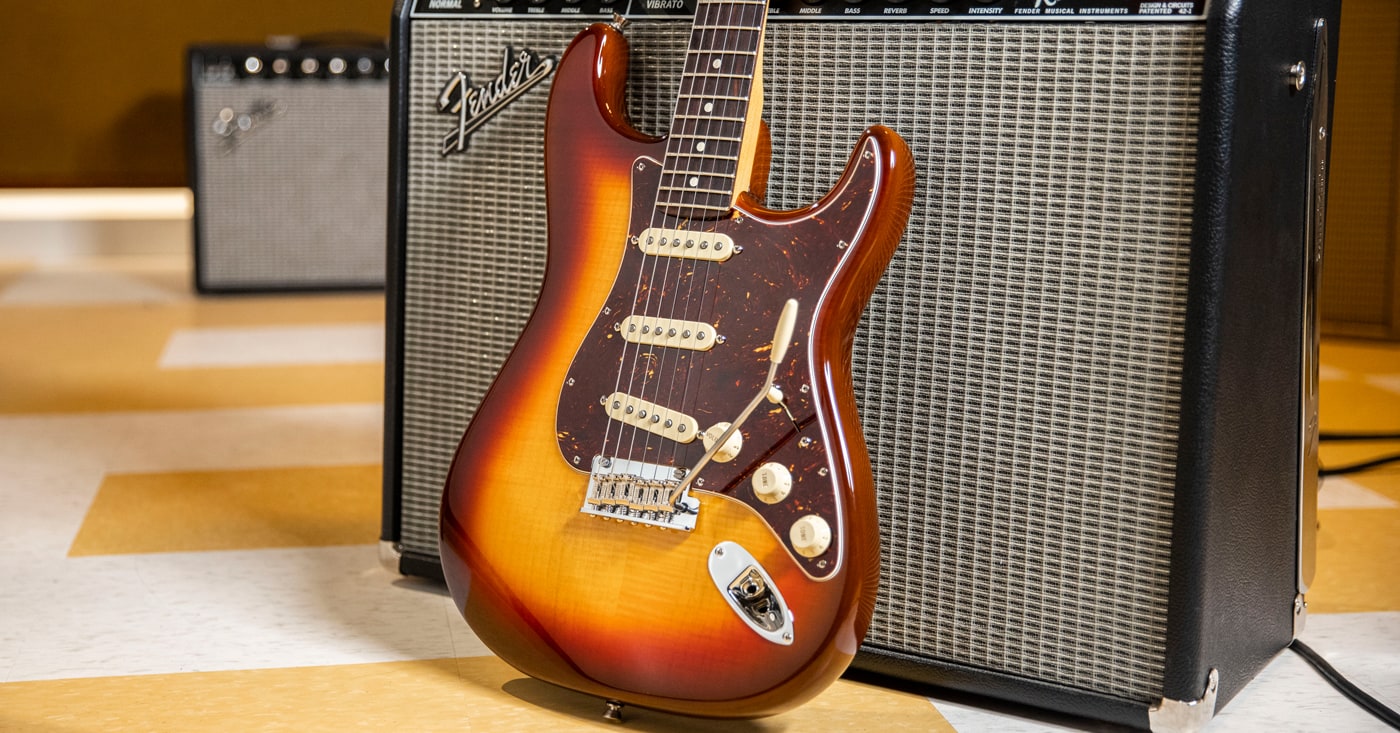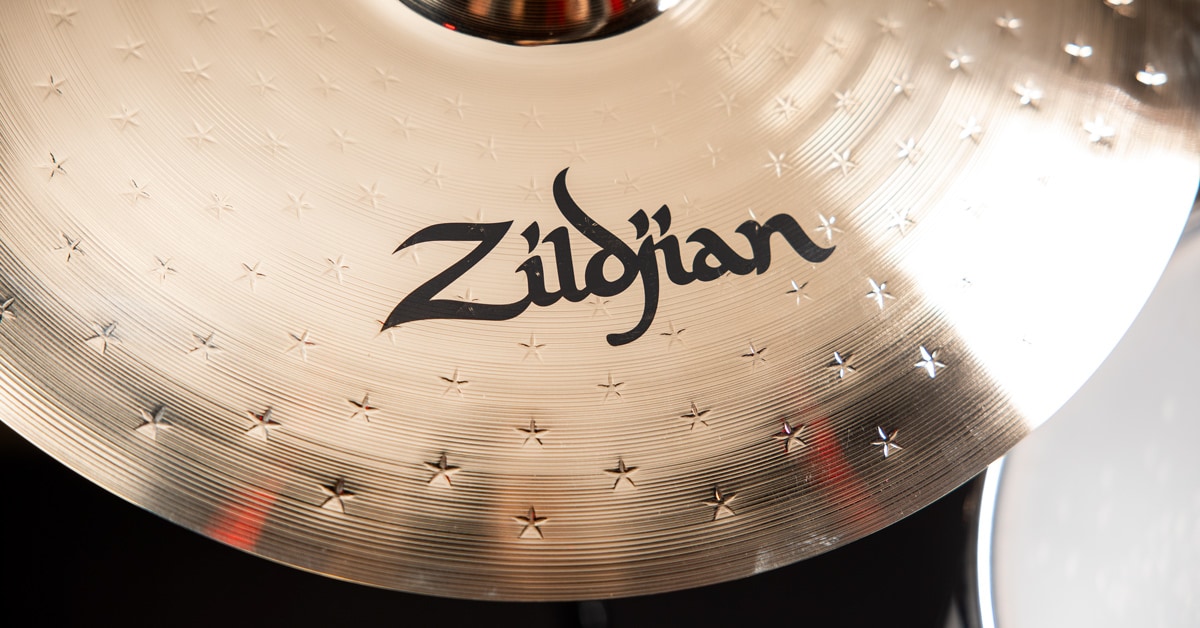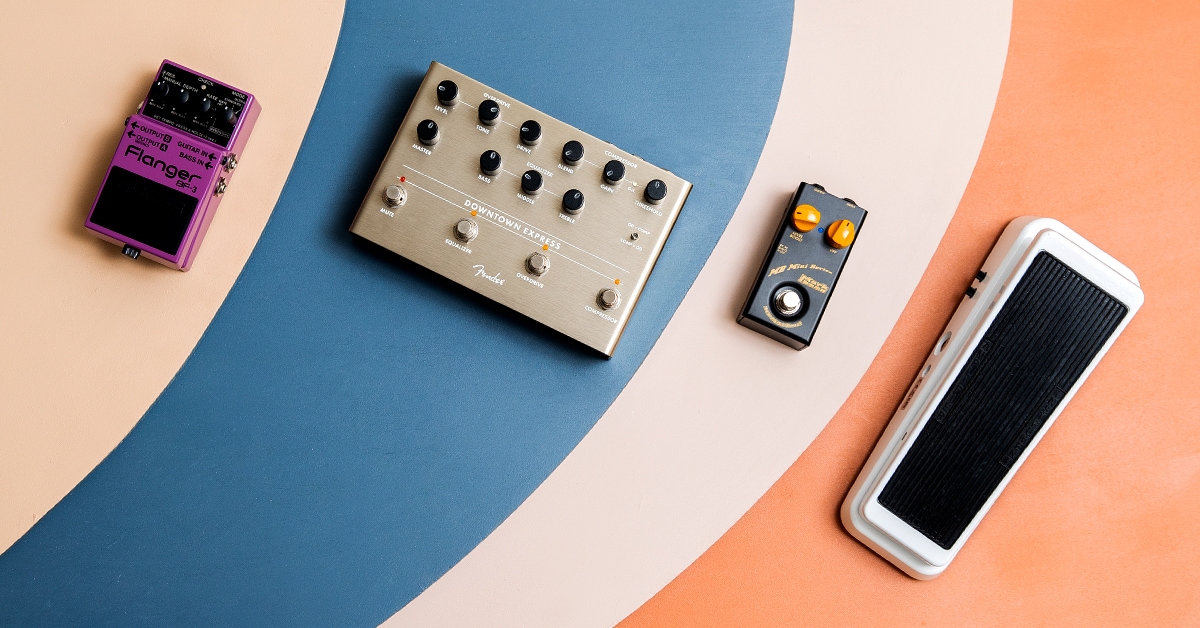Back when humanity was still stacking up rocks to make festival stages, bass players were confined to an amp, a cable and an instrument, while guitar players got all the cool toys. It took several decades before bass players began to put together pedalboards of their own, seeking equity with the stage real estate guitarists had claimed. In this article, we're going to balance the equation and look at the best effects pedals for bass, from EQ and compression to distortion, filters, modulation pedals and more. We'll be covering a little history first, but if you just want to get to the gear, feel free to use the links below in the handy Table of Contents to jump right there.
Table of Contents
History of Bass Pedals
Our Choices by Type
Best Preamp and DI Bass Pedals
Best Boost and Distortion Bass Pedals
Best Compressor Bass Pedals
Best Filter and EQ Bass Pedals
Best Modulation Bass Pedals
Best Multi-Effects Bass Pedals
Best Bass Pedal for Strangeness
Wrapping It All Up
History of Bass Pedals
It's interesting that the first use of a fuzz tone on record wasn't rock and wasn't a guitar. It was on country singer Marty Robbins' 1961 hit, "Don't Worry." The 19 seconds of fuzz bass solo in the middle of what was otherwise a mostly acoustic song was the result of a malfunction in a channel of the mixing board. After the producer and engineer decided to keep "that weird sound," engineer Glenn T. Snoddy figured out exactly what had happened, and recreated the "faulty" circuit, just in case anybody wanted it again. This circuit ended up in a box with a footswitch as the Maestro FZ-1 Fuzz-Tone, and the modern age of stompboxes was off to the races.
For the first several years, it was primarily guitarists using these new boxes. But an increasing number of bass players were dipping their toes into the pool—for example, Bill Wyman's use of fuzz bass on The Rolling Stones' 1966 recording of "Under My Thumb." The first big breakthrough for bass effects pedal use, though, occurred when Sly Stone hired bassist Larry Graham away from Graham’s mother's gospel trio for his new band. In addition to his slap and pop bass style, Graham, a one-time guitarist, was a pioneer in the use of effects pedals for bass. He famously used the built-in fuzz of his Acoustic 360 bass amp on Sly and the Family Stone's well-documented set at the 1969 Woodstock Music Festival. But Graham, throughout his career, has also used fuzz pedals, wah pedals and phase shifters. He was also one of the first to use an envelope filter on the bass.
Many of the bassists who incorporated Graham's "thumping and plucking" playing style, like Bootsy Collins, Stanley Clarke and others, also adopted his use of pedals, with some, like Collins, adding delay and other effects to expand their palette of sonic tricks. But there was one big problem holding bass players back from a more widespread adoption of effects pedals. Battery-powered effects designed for guitar simply couldn't deal gracefully with bass. Inherent frequency response limitations in the designs meant a loss of bass frequencies, turning many pedals that sounded great for guitars into serious tone sucks for bass. So, bassists had to wait.
In the late 1980s, Roland/BOSS began designing pedals that were intended specifically for bass guitar. One key to the success of these pedals was the use of low-pass and high-pass filters to leave the fundamentals of bass notes untouched while processing overtones so that the impact of the bass didn't get lost. This period also saw the first rackmount multi-effects units designed specifically for bass. As the '90s began, many more companies, seeing the popularity of the BOSS bass effects, began to develop pedals specifically to enhance and expand the sonic possibilities bassists had.
The increasing presence and popularity of DSP-based physical modeling in the mid-'90s began to be felt in the bass world as well as the guitar world. Analog and digital products inspired each other to up their respective games as well. From the analog Tech 21 SansAmp Bass Driver to the Line 6 Bass POD, bass-specific products, many of which combined preamps with effects, started hitting the stores, offering bassists far more options and beginning to change the sound and role of the bass in popular music. Thirty years later, the variety and quality of bass-specific effects continues to expand and grow.
Our Choices By Type
We've broken down our choices into six basic categories to help you zero in more quickly on the best bass effect pedals for your needs. First, we'll break down what those categories are, then walk you through our selections for each category.
Types of Bass Effects
Unlike earlier decades, there are many dedicated bass effects pedals available today, but they tend to break down into a handful of basic categories.
Preamps and DIs:
While the DI (Direct Injection) box has been one of the most prominent ways of recording bass and getting a solid bass signal into a live mixing board, having a DI combined with a preamp specifically designed for bass makes it a far more powerful tool. The development of pedals that combine the two is especially handy for the growing use of "silent stage" setups for houses of worship, clubs, shows at venues like casinos, and touring bands who like to keep stage gear to a minimum. They range from basic EQ and gain controls to more comprehensive units that include switchable channels, built-in distortion/overdrive and more.
Boost and Distortion:
Whether you're looking for just a quick boost from hot to hotter or want a full-blown fuzz, this is the place to get that extra edge on your sound. These can be very basic volume boosts or pedals with split outputs and multiple voicing.
Compressor:
Probably the most widely used effect for bass, a good compressor helps smooth out your signal and keep your sound in the right spot in the mix. It's essential for the pop and snap of modern funk playing and for keeping dynamics even and controlled.
Filter and EQ:
We're grouping these effects together because they're related in concept and in use. Envelope filters (aka auto-wah) and wah pedals were among the earliest effects used on bass guitar, second only to distortion. The use of a supplementary equalizer pedal (EQ) enables bassists to further expand their tonal palette beyond the basic tone they have dialed in on their amplifier or preamp.
Modulation:
Whether time-based (chorus) or frequency-based (phase shifter), modulation effects add that rich, harmonic "swoosh" to your sound. Important for bass versions of this effect is to have some sort of filter that leaves the fundamental untouched.
Multi-Effects:
All of the above, plus more.
Best Preamp and DI Bass Pedals
Whatever else you're doing, you'll need a preamp to shape your sound on the way to your amp, and a DI to get it into a mixer or interface. We've got some great choices here.
MXR M81
The most basic of the pedals in this category, the all-analog MXR M81 features three-band EQ and a pro-level DI that can be toggled pre- or post-EQ. This enables a super-clean, flat signal to the console while using the tone controls to alter your amp's tone, or the EQ'd signal to hit both the amp and the console, depending on need. The mid control is sweepable from 250Hz to 1kHz for easy access to a wide range of tonalities. Using MXR's Constant Headroom Technology to keep the clean headroom at the max, this is a great tool for the bassist who lives primarily in the world of clean signal or who prefers to use a separate overdrive or distortion pedal. The size is extremely pedalboard friendly, and this would be a great pedal to serve as the center of a bass setup aimed at silent stage or a "fly rig" for touring bassists.
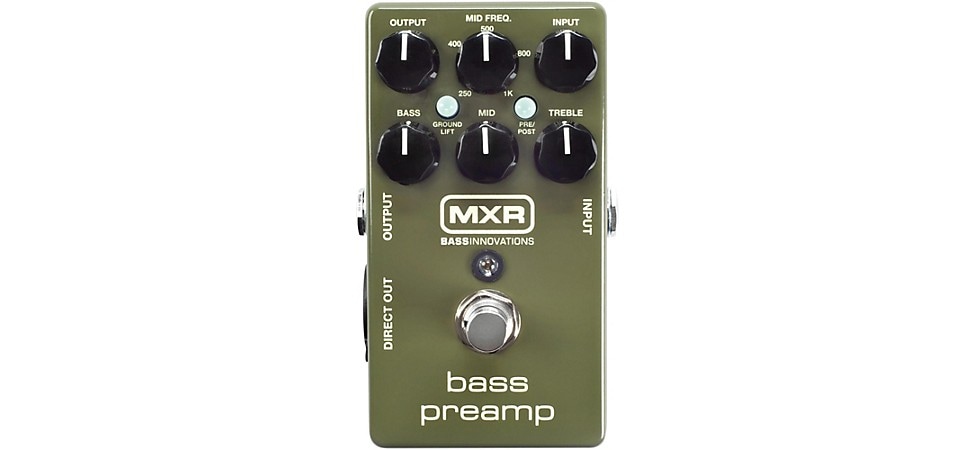
Pictured: MXR M81 Bass Preamp
Ampeg SCR-DI Bass DI With Overdrive
Ampeg has been a big name in bass amplification for over 60 years. The Ampeg SCR-DI Bass DI with Scrambler Overdrive is based on the popular preamp section from their recent BA Series bass amps along with their Scrambler overdrive circuit, set up as a convenient pedal. If you're familiar with the classic Ampeg bass amps (SVT, B-15 Portaflex, etc.) and their three-band EQ tone stack, you'll be right at home here, with solid sounds that are undeniably Ampeg. The preamp side also carries over the Ultra-Low and Ultra-High switches from those amps as well.
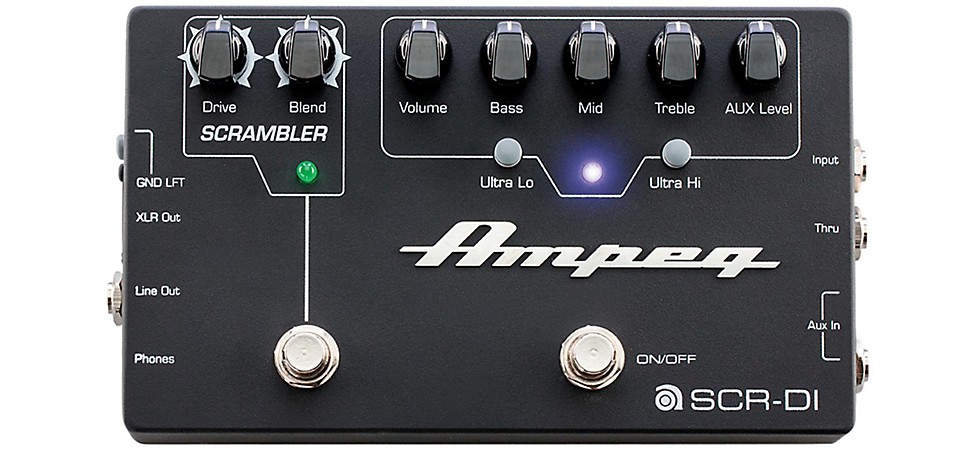
Pictured: Ampeg SCR-DI Bass DI with Scrambler Overdrive
The SCR-DI is very much two pedals in one, as the Scrambler overdrive can be run with or without the preamp section. The Scrambler is a blendable overdrive, so you can go from adding just a little bit of "hair" to the signal to full-on raging crunch, all depending on how you have the drive and blend knobs set.
The pedal's XLR and 1/4" line outs carry duplicate signals, so it's easy to have the same sound going to an onstage power amp and cabinet, and to a mixing console. Set up this way, you can effectively run a virtual four-channel bass system—plain DI only, DI with tone stack, DI with Scrambler, and DI with tone stack and Scrambler. That's a lot of versatility for one pedal. There is also an unprocessed Thru output if you want to do some parallel processing of your bass signal, or just run to your regular amp, using the pedal only for feeding front of house or a recording board. The SCR-DI also has a built-in headphone amp and both 1/4" and 1/8" AUX ins for use as an ideal desktop silent practice amp. Since the AUX in signal only appears on the headphone out, it's use as an amp for in-ear monitors shouldn't be overlooked. Effectively, it's an entire amp system, and at this price, it's a worthwhile investment just to have a backup bass rig if your regular amp goes out in a critical situation.
Two Notes Le Bass
Two Notes Engineering may be best known for its Torpedo series of loadboxes and virtual speaker/IR loaders, and their Wall of Sound cabinet modeling plug-in, but their Le Preamp series of tube-based instrument preamps are also well worth a look. The Two Notes Le Bass (yes, the company is based in France) dual-channel tube preamp is a seriously versatile addition to any bass pedalboard, whether it's being used as the central piece or as an additional effect.
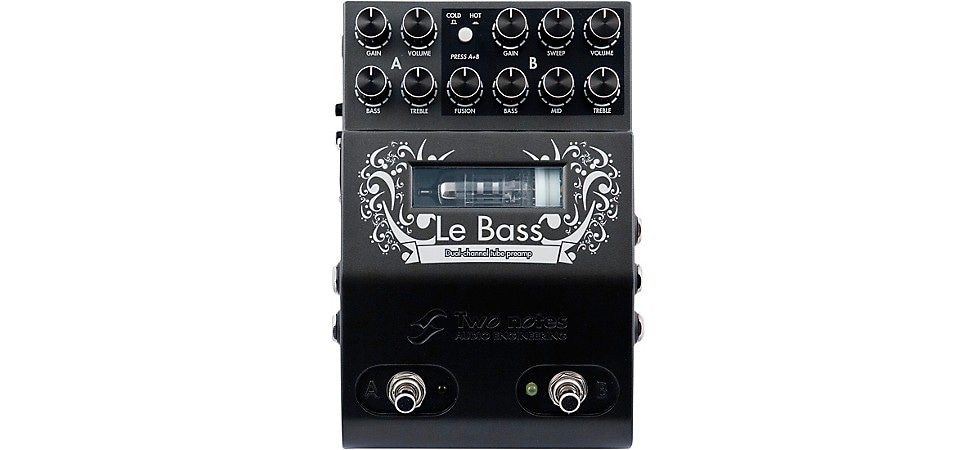
Pictured: Two Notes Le Bass
Le Bass uses an ECC83/12AX7a preamp tube and transforms the high-current 12V power that feeds the pedal to 200V in order to properly drive the tube as the basis for some serious tone. Each of the preamp's two channels has independent gain, tone and volume controls. Channel A is the more vintage-sounding channel with its two-band EQ placed before the gain circuit. Channel B, the more modern channel, has a three-band EQ with sweepable mids placed after the gain staging for better control over more highly driven tones. But the real fun begins when you switch on both channels at once and use Le Bass's Fusion modes. When both channels are on, Cold Fusion mode runs the channels in parallel, enabling you to blend the channels. This allows you to keep the clarity and roundness of the vintage channel while blending in some aggressive bite from the more modern one. Hot Fusion mode places the two channels in series, with Channel A driving Channel B, opening the possibility for some seriously high-gain bass tones.
As for inputs and outputs, the Two Notes Le Bass is well supplied. It has the typical 1/4" In and Thru connections, an unbalanced 1/4" output, an XLR DI output with ground lift, headphone output, switchable analog speaker simulation that applies to both the DI and headphone outs, 5-pin MIDI In and Out and, one of the cooler features here, an effects loop placed between the preamp and the speaker simulation. Pedalboard for your pedalboard, anyone? There's a lot of power and versatility here, and, if you run any sort of MIDI system, the ability to change a preset on something else and have it switch your preamp channels, or vice versa, makes this one that should be near the top of your list.
Orange Bass Butler
The Orange Bass Butler uses a unique approach to getting more modern, more aggressive bass sounds while still keeping a round, pristine studio-quality tone on tap. The basic concept is a bi-amped bass rig. This is one that rock and metal bassists have been using for years and one that is a studio standard for recording. Take one clean, round, fat bass tone on one channel. At the same time, split the signal from the bass into a raucous, overdriven guitar amp with most of the bass rolled off. Blend the two together and you get a fat, solid fundamental with a gritty, aggressive attack that doesn't get muddy. This bi-amped system that would normally require two amps, several DI boxes and splitters, plus the roadies to set it all up, is effectively what Orange has packed into the Bass Butler. If you love that type of tone, you will absolutely adore this pedal.
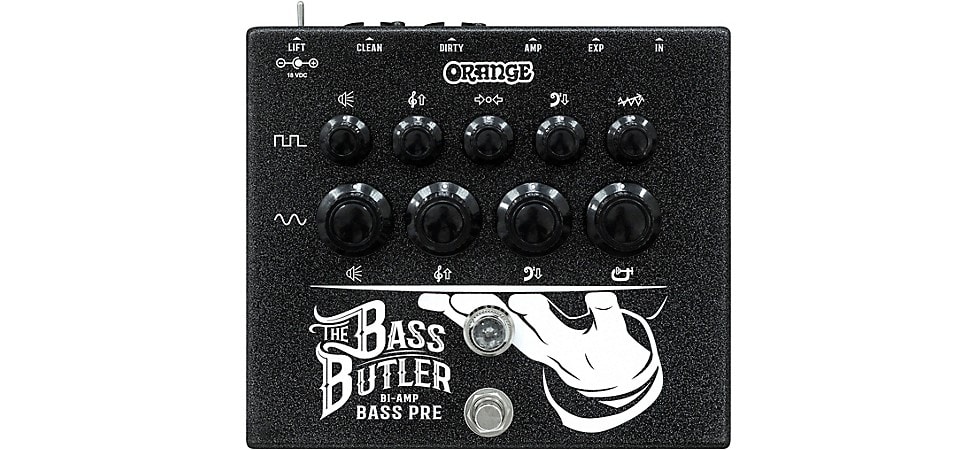
Pictured: Orange Bass Butler
The Bass Butler has two channels, which should be called Bass and Guitar, although, Orange, following their own tradition has labeled every control with little icons. The clean bass channel is indicated by a sine wave and the distorted guitar channel by a square wave. The tone controls are indicated by musical clefs, etc. We're just going to refer to them by function here (sorry, Orange). Back to the pedal. The Bass channel has a volume knob, two-band EQ and a single-knob compressor that is quite musical. The Guitar channel has a volume knob, three-band EQ and a gain knob to control the amount of drive you're getting from that channel. The idea is to use the volume knobs of the two channels to create the blend you want. The footswitch moves between the Bass channel only or the two blended channels. There is no "off" position, as this pedal is designed to be your always-on preamp.
For I/O, there is a 1/4" input for your bass and a 1/4" output to your amp. There's also a connection for an expression pedal that effectively rolls the guitar channel's volume knob in and out, so you can smoothly transition from totally clean to full drive. There are also two balanced XLR outs, one for the Bass channel and one for the Guitar channel, which enables the mix engineer to control the blend live and the recording engineer to track both to separate channels for blending at mix down. Note that this is a fairly thick pedal, so make sure your pedalboard case or bag is deep enough to fit it.
Best Boost and Distortion Bass Pedals
Need just a little extra level to pop your bass out or drive your amp a little more? Looking for roaring fuzz bass? This section is where to find your answer.
Markbass MB Mini-Boost
Of all the pedals we're looking at here, the Markbass MB Mini-Boost is the simplest and purest. Two knobs is all you need. The left-hand knob dials in up to 20dB of clean boost. The right-hand knob, labeled VPF, for Variable Pre-shape Filter, is a bass guitar-specific mid-scoop filter. Such filters are frequently used for slap bass techniques, playing with a pick or classic, eighth-note rock drive. The more you turn it up, the more it scoops out the mids. Frankly, we don't see why this one doesn't live on every bassist's pedalboard. Sometimes, we all need a little boost.
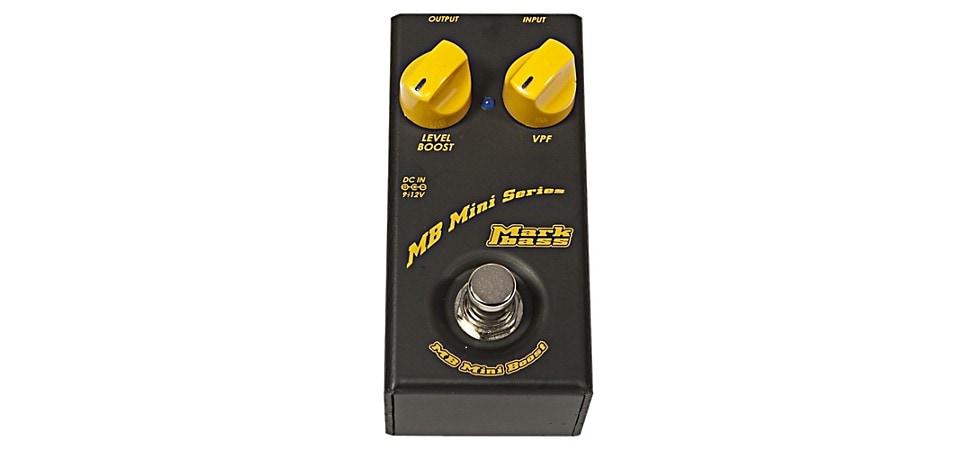
Pictured: Markbass MB Mini-Boost
Electro-Harmonix Bass Big Muff Pi
The Electro-Harmonix Big Muff Pi is one of the most widely used fuzz pedals in the history of amplified music, and the Bass Big Muff Pi takes all that insanity and voices it specifically for bass. One very important feature here is the split Dry and Effect outputs, which enable you to record the clean and fuzz outputs separately, run to two separate amps, two channels of the same amp or to separate mixer inputs live. Best of all, because nothing exceeds like excess, there's a switchable bass boost to send the fuzz totally over the top. For sheer, unadulterated fun, fuzz bass has got to be right up near the top of the list.
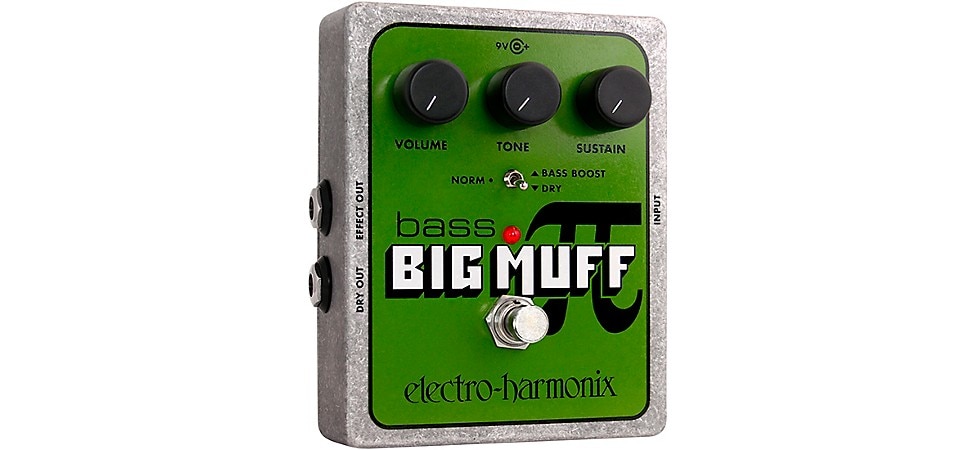
Pictured: Electro-Harmonix Bass Big Muff Pi
Best Compressor Bass Pedals
Every bassist needs a good compressor somewhere in their signal chain. No matter what style or genre you play, that's just a fact.
Darkglass Hyper Luminal Compressor
We've only got one choice in this category, but it's a doozy. Darkglass has built a reputation for bass-specific pedals and preamps, and the Darkglass Hyper Luminal Compressor is a brilliant example of why they've become so well considered. Packing three different types of compressor into one box, the Hyper Luminal is a hybrid design using an analog VCA (voltage controlled amplifier) controlled by digital circuitry. This keeps the signal path completely analog, but enables very flexible controls, including Darkglass' unique touch controls for compression ratio and compressor type selection.
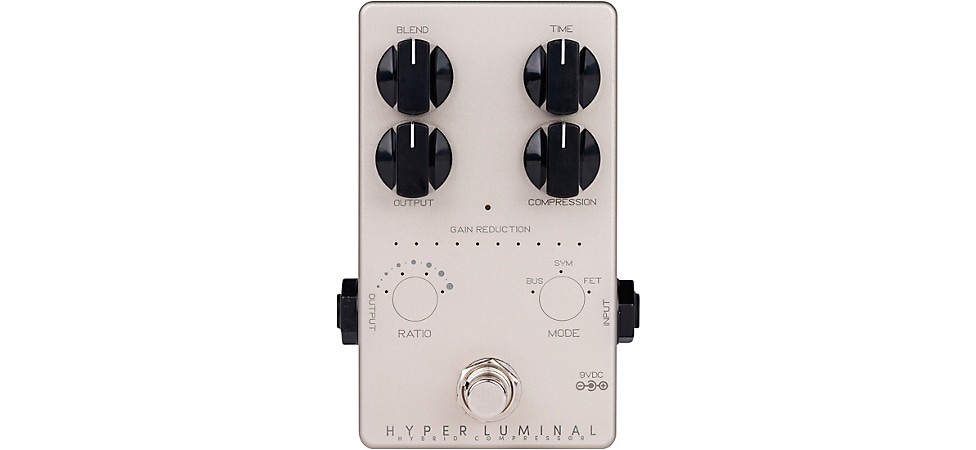
Pictured: Darkglass Hyper Luminal Compressor
The three compressor types in the Darkglass Hyper Luminal are labeled, from left to right on the touch control, Bus, Sym and FET. Bus is modeled after the Solid State Logic bus compressor with its feedback design that was closely related to the original UREI LA2A compressor for a smooth, almost seamless compression. Sym is Darkglass' own, now discontinued, Super Symmetry 115 GeV Compressor, known for its smooth action and an almost envelope-like attack. FET is inspired by the legendary UREI/Universal Audio 1176, with lighting-fast response and just enough grit to make it interesting.
The Hyper Luminal's controls are simplicity itself. Blend controls the mix of original and effected signal. One neat feature here is that it's placed before the Output control, so the box can be used as a clean boost when the Blend knob is all the way down. The Time knob is connected to the attack and release time constants. Lest you think that a single knob to control both is a problem, these time constants are editable via the Hyper Luminal's USB connector and the Darkglass Suite software app, which even allow you to customize the settings for each compressor type. The Compression knob controls the overall amount of compression, and the Output knob should be fairly self-explanatory. The two touch controls change compression ratio and select compressor type. That's an awful lot of power and versatility for a standard-size stompbox. With the ability to update the digital control software, there's a promise of new compressors to come as well. With the equivalent of two classic studio rack compressors and an in-demand stompbox compressor in a single package, this one should be on every bass player's list.
Best Filter and EQ Bass Pedals
EQ and its ability to fine-tune an instrument's tone has been central to recording and performance since it was first invented, but putting it in a stompbox and making it usable as an effect opened up new frontiers. The vocal-like sound of wah pedals and envelope filters have been second only to distortion as an effect for bass players since those effects first arrived on the scene. The sub-octave, also known as octave-down effect, has enabled bassists to thicken and reinforce their dominance of the deep.
BOSS GEB-7 Bass Equalizer
A seven-band graphic equalizer pedal with EQ center points customized for electric bass guitar, the BOSS GEB-7 has a range from 50Hz to 10kHz and a dedicated level control slider, which enables the pedal to be used for boost or cut. The GEB-7 can easily shape your tone precisely, going from subtle to extreme with a tap of your toe.
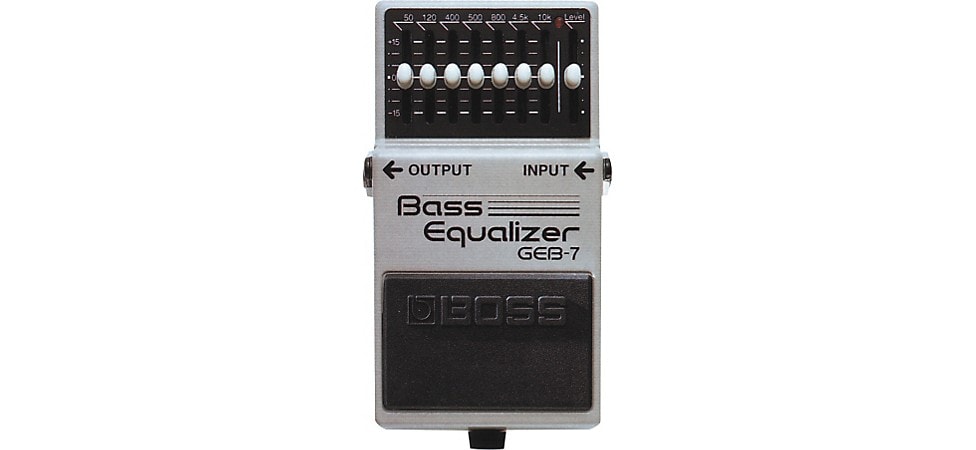
Pictured: Boss GEB-7 Bass Equalizer
One other use for an EQ pedal is to maintain level and tonal consistency between two basses. For example, if one of your stage instruments is active and one is passive, you can set the GEB-7 to keep everything consistent when you swap instruments. This makes for a seamless transition for you, and (maybe more importantly) for the Front of House mixer, who won't have to jump up and make hurried changes.
Dunlop Cry Baby 105Q Bass Wah
From early on, bass players experimented with wah pedals, but mostly switched to envelope filters because the wah pedals designed for guitarists were not kind to low frequencies when they were switched on. The Dunlop 105Q Bass Wah takes a unique approach to that problem achieving a "best of both worlds" solution.
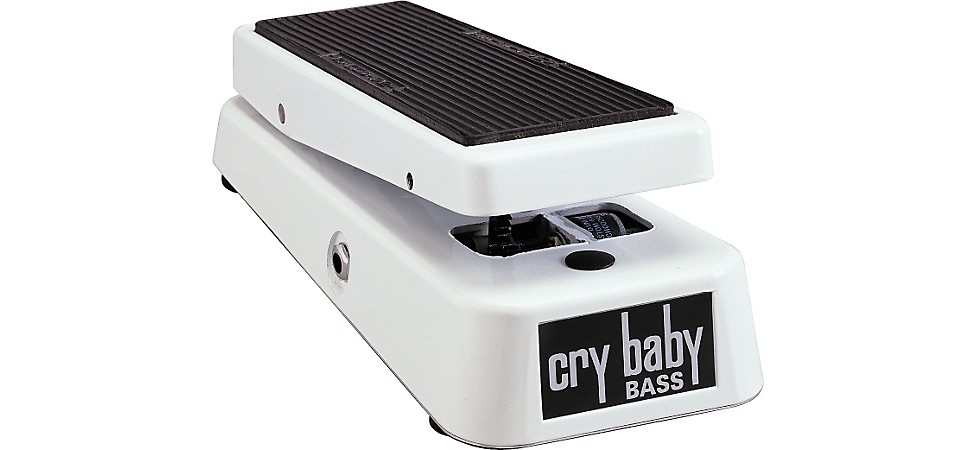
Pictured: Dunlop Cry Baby 105Q Bass Wah
The 105Q was designed from scratch expressly as a pedal for bassists, and it is almost a hybrid of a wah and an envelope filter. Dunlop engineers borrowed circuitry from their envelope filters but control the sweep of the filter with the pedal. They also mixed in the fundamental frequencies of the bass so low end is never lost, while the effect is primarily applied to the mid and high frequencies of the signal. A variable Q (filter resonance) control is located on the side of the pedal, enabling you to go from a standard Cry Baby wah sound to a more intense, focused sound at higher (which equals narrower) Q settings. There is also an adjustable boost of up to 20dB. For a touch of added coolness, Dunlop's neat switching system turns off the wah when you just lift your foot off the pedal.
Morley Cliff Burton Tribute Power Wah Fuzz
Widely recognized as one of the greatest bassists of all time, Cliff Burton was a pioneer whose magic has been captured on the first three Metallica records. A major part of his inimitable sound was the Morley Power Wah Fuzz, which he used to dramatic effect on tracks like “(Anesthesia) - Pulling Teeth,” “For Whom the Bell Tolls” and “The Call of Ktulu.” The Morley Cliff Burton Tribute Power Wah Fuzz is a reissue of a classic, complete with its unique frequency sweep and electro-optical circuitry. Housed in a distressed chrome enclosure and featuring a glow-in-the-dark rubber treadle, the Morley Cliff Burton Power Wah Fuzz emulates the old-school, broken-speaker sound of the original while paying homage to a legend. Famous Morley switchless activation engages the effect as pressure is applied to the treadle and bypasses it when you step off. The wah circuit also features up to 15dB of level boost, so you can solo just like the master himself.
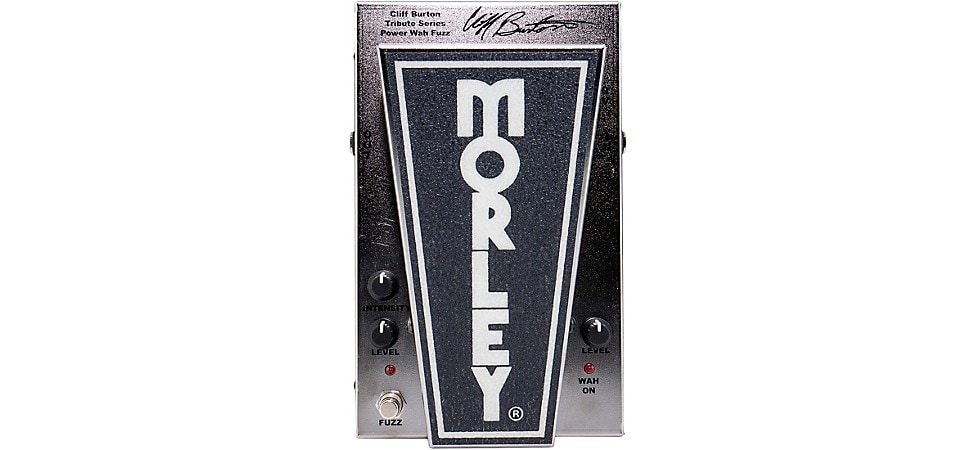
Pictured: Morley Cliff Burton Tribute Power Wah Fuzz
Guitar Center is honored to exclusively offer the Cliff Burton Tribute Series Power Wah Fuzz by Morley—take your bass, guitar or keyboard sounds over the top with a tonal icon.
MXR M82 Bass Envelope Filter
One of the most iconic sounds in funk is the "wow-wow-wow" of an envelope filter. From OG Larry Graham with Sly and the Family Stone and Bootsy Collins' summoning of the Mothership with Parliament/Funkadelic to Flea and Marcus Miller, that particular type of sweeping filter is an integral part of funk bass history. The MXR M82 Bass Envelope Filter's all-analog design and simple controls make it an excellent choice if you are laying it down on the one.
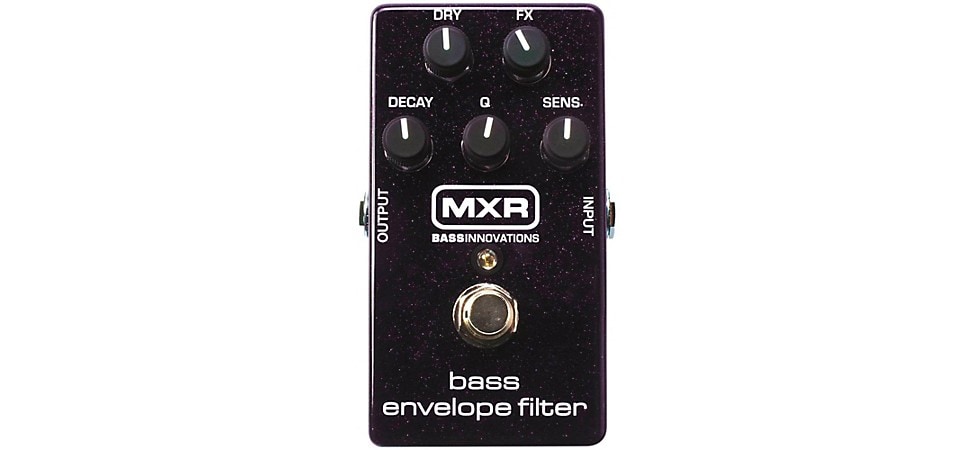
Pictured: MXR M82 Bass Envelope Filter
One of the key features that puts the M82 on our list is the use of separate Dry and Effect level knobs as opposed to a single-blend knob. Separate levels allow for a greater range of filter effects from just barely noticeable to totally over the top. For the filter itself, there are three controls available. First, Decay, which sets the frequency where the envelope sweep will end. Next, Q sets the resonant frequency of the filter peak. Lastly, Sens (sensitivity) determines what level of attack will trigger the filter, making it possible, for example, for the envelope to only trigger on the loudest notes, such as a thumb pop, leaving regular fingerstyle plucks with medium dynamics untouched.
Electro-Harmonix Blurst Modulated Filter
The Electro-Harmonix Blurst Modulated Filter can get pretty trippy, which is appropriate considering the long EHX tradition. It's also one of the most flexible filter pedals out there. You can think of it as an envelope filter that's controlled by the sweep of an LFO (low frequency oscillator) instead of your playing dynamics. Or, like a chorus pedal that sweeps frequency instead of time.
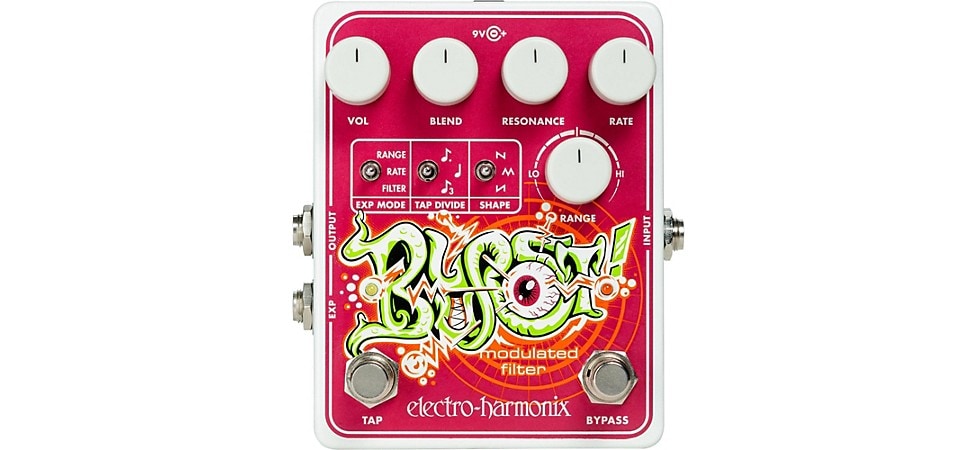
Pictured: Electro-Harmonix Blurst Modulated Filter
There's a lot of available control here, with five knobs, three mini toggle switches and a pair of footswitches, plus an expression pedal input. Let's take a quick cruise through the functions, knobs first.
The Output knob simply controls the volume of the pedal when the effect is engaged. The Blend knob mixes your dry and effected signals. The next three knobs, Resonance, Rate and Range control the filter and the LFO. Resonance controls the Q factor of the filter and Range controls the width of the frequency sweep. Rate, naturally, controls the speed of the LFO. You'd think that would be enough, but those mini toggles add a whole other layer.
Going from left to right, the first toggle switch, Exp Mode, sets what is controlled by the expression pedal/CV (yes, the pedal can use control voltage, as a nod to its analog synthesis roots), should have one connected. The choices are Range, Rate and Filter. The first two essentially change the settings of the associated knobs, enabling you to sweep them manually with a pedal. Selecting Filter, though, bypasses the LFO and sweeps the filter itself with the pedal, effectively turning the Blurst into a very cool wah pedal. The second toggle, Tap Divide, operates in conjunction with the Tap switch to set the sweep rate to quarter note, dotted eighth note or eighth-note triplets for the tempo you tapped in. The third switch, Shape, switches between sawtooth, triangle and reverse sawtooth waveforms for the LFO.
As mentioned, there's a lot here, and the range of textures this pedal can produce take it from subtle to total madness. Plus, the Electro-Harmonix Blurst's function as a cool wah pedal is a distinct plus. This one is well worth a spot on your pedalboard if you're exploring funk, psychedelia or contemporary fusion.
Best Modulation Bass Pedals
Swoosh, swirl and swim in the rich wash of modulation effects. We've got a pair of solid choices here to help liquify your sound.
BOSS BF-3 Flanger
The BOSS BF-3 Flanger adds features to the original BF-2 Flanger, creating a pedal that's great for bass or for guitar. While the BF-3 is a stereo/mono pedal, most bassists are likely to keep it in mono on their pedalboard. The unit has separate bass and guitar inputs, so if you play both, you can easily pop it from your bass pedalboard to your guitar one. BOSS offers four distinct modes for the pedal with amp control to tweak it to exactly where you need.
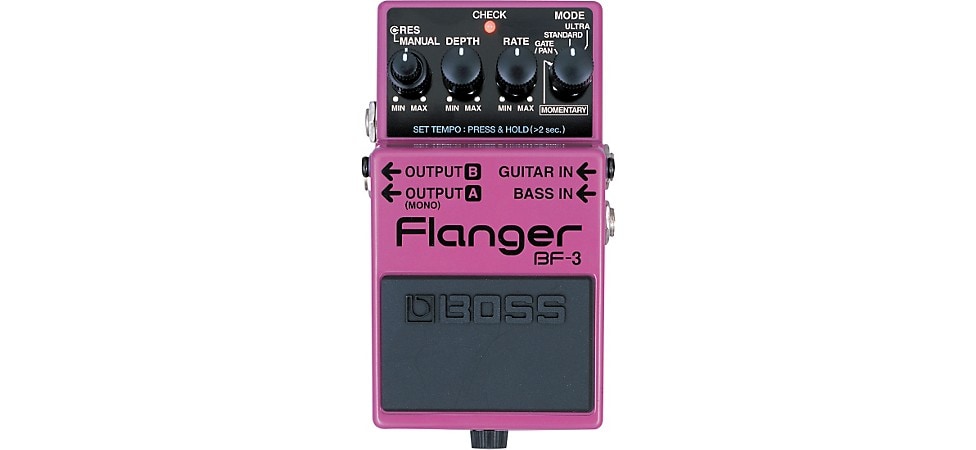
Pictured: BOSS BF-3 Flanger
The control knobs start with a stacked pot that controls both the center frequency of the sweep (Manual) and the amount of feedback (Res), which controls the resonance of the effect. Next is the Depth knob, which controls the width of the flanger's sweep. This is followed by the Rate knob, which controls the speed. The final knob, going from left to right, controls the BF-3's mode of operation. There are four choices, the first two of which control the strength of the effect: Ultra provides an extra-strong flanging sound, whereas Standard is a normal flanger. The next choice, Gate/Pan creates massive volume differences in the flange sweep. In stereo mode, this acts as panning. In Mono, which is where you're most likely to be running it for bass, it creates a rhythmic gating effect, which can be a "chopper"-type of effect at extreme settings. Finally, Momentary activates the BF-3 in Standard flange mode only while the toe switch is depressed—great for adding a little touch of texture in the middle of a chorus.
Electro-Harmonix Bass Clone Analog Chorus
The Electro-Harmonix Bass Clone Analog Chorus is a bass-specific version of their classic Small Clone guitar pedal. The mods for the bass version are a very clever combination of tricks that make this an excellent choice for your pedalboard.
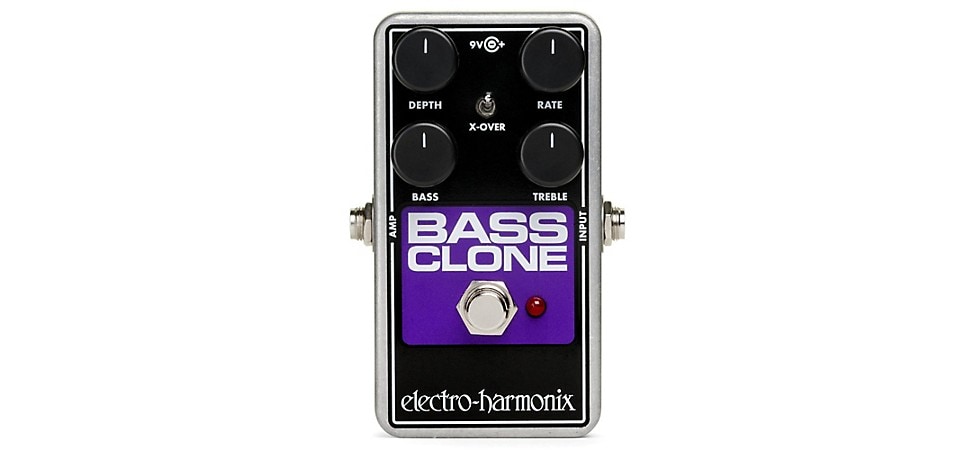
Pictured: Electro-Harmonix Bass Clone Analog Chorus
The first, and most important change, if you ask us, is adding a crossover to keep the bass fundamental frequencies out of the modulated signal, so you always have a solid foundation in your bass line. The second cool tweak is in the tone controls. The Treble knob affects the whole signal, but the Bass knob will only affect the original, dry signal, once again, keeping the foundation solid and keeping the effect from getting muddy.
The controls for the chorus effect itself are the standard two-knob setup—Depth and Rate, which should be self-explanatory. The all-analog chorus circuit can easily go from a subtle doubling effect to the full-blown seasick warble of full-depth and high-rate settings. For modern pop and styles like emo and shoegaze, it's an essential sound.
Best Multi-Effects Bass Pedals
Modern multi-effects units aren't just for guitarists. The ones we look at here are a solid basis for any bassist's effects arsenal.
Fender Downtown Express Bass Multi-Effects
The Fender Downtown Express Bass multi-effects pedal puts the most basic bass effects in a single unit and adds a couple of interesting twists. Designed by bass guru Alex Aguilar, the Downtown Express combines an overdrive, compressor and three-band EQ in a very pedalboard-friendly form factor.
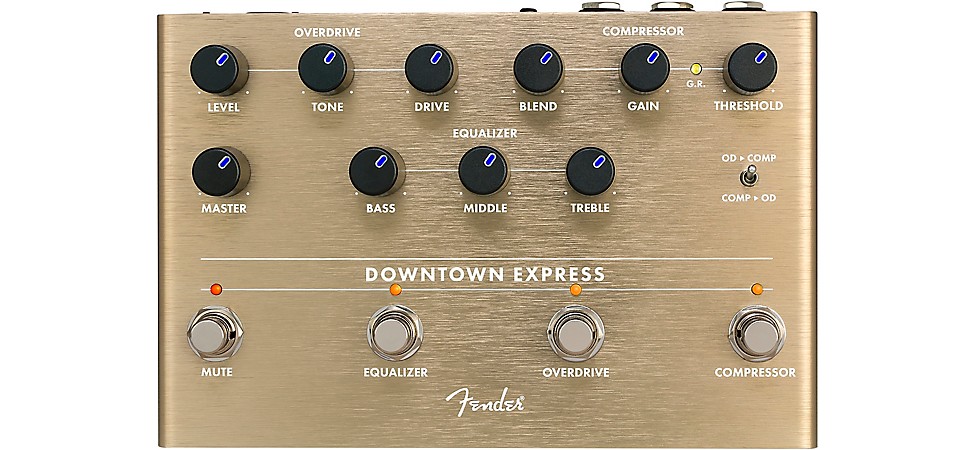
Pictured: Fender Downtown Express
The overdrive section offers basic three-knob control: Level, Tone and Drive. It can go from just a touch of grit to an extremely aggressive distortion. Aguilar designed in a cabinet simulation to the overdrive to avoid excess "fizziness" when used with a modern bass amp that includes a tweeter, which is a nice touch and saves you having to EQ it out on the amp.
The compressor is a true RMS compressor. This means that, unlike many guitar compressor pedals, it doesn't just look at the loudest part of your signal and reduce its volume, but also looks at the overall level of your playing and averages that out, retaining more of the original dynamics. Controls are Blend, which enables you to add in some uncompressed signal for cleaner attacks; Gain, to make up for any level drop higher compression settings may cause; and Threshold, which sets the overall compression.
The Downtown Express' three-band EQ features a classic inductor-based mid control, like many vintage bass amps of the '60s and '70s. This adds a distinct, classic sonic signature.
One very nicely done feature is the ability to swap the order of the overdrive and the compressor. Overdrive first keeps the tonal dynamics of the distortion in place, while smoothing level. Placing the compressor first in the signal chain makes for an overall smoother and uniform attack to the distortion sound.
The Fender Downtown Express also has a DI out, for feeding a mixer or audio interface, a dedicated tuner output and a master volume knob to make sure your amp is always seeing the right level for best performance. If you're just starting to put together a pedalboard for your bass, this is a great starting point, since its all-in-one nature covers the most bass-ic effects.
BOSS GT-1B Bass Multi-Effects
The BOSS GT-1B Bass multi-effects processor may be part of a pedalboard, or it could be your entire bass rig, especially if you do a lot of "silent stage" gigs. There are so many features here that we could probably write an entire article the length of the one you're reading now just on the GT-1B, so we're just going to touch on a few things.
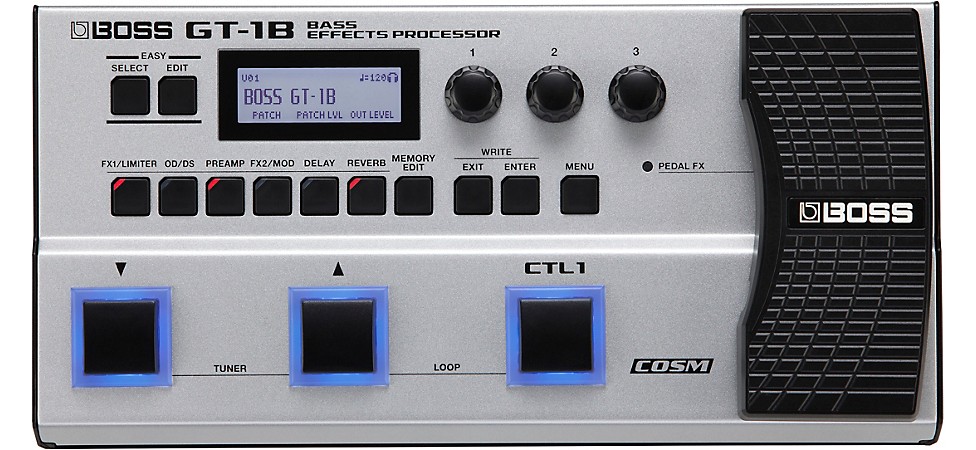
Pictured: BOSS GT-1B
First, the amp models use the well-respected Roland/BOSS COSM modeling engine. The available models include sounds based on vintage classics like the Ampeg B-15 and SVT, Fender Bassman and Acoustic 360, as well as modern amps from Gallien-Kruger, SWR, Markbass and more.
There are over 90 effects available, ranging from simple overdrives, wahs, compressors and EQs to bass synths, pitch shifting, harmonizers, ring modulators and more. We're pretty sure that every class of bass effect is covered in here somewhere and exploring the possibilities in this type of multi-effect is more than half the fun. For even more fun, there's a built-in looper.
I/O on the GT-1B is comprehensive with regular and AUX inputs, expression pedal input, stereo/mono output, headphone out, and a USB connection to use it as a class-compliant audio interface, edit the 99 supplied presets or create new ones in the 99 available user presets.
So, after using the built-in tuner, there is a lot to explore here. For sonically adventurous bassists, or for those who want to be, the BOSS GT-1B is an Aladdin's cave of musical magic, waiting to discover.
Best Bass Pedal for Strangeness
There's only one pedal here, simply because it stands alone in what it does. But what it does is very special.
Electro-Harmonix Bass MicroSynth
We were unsure just where to place the Electro-Harmonix Bass MicroSynth in this list. We wrestled with if it belonged with the filter, EQ and octave effects, because it can do all of that. Or, should it be with the multi-effects units, because it can do a whole lot of very, very cool stuff. At the last minute, we decided that it is so individual, it gets a category of its very own.
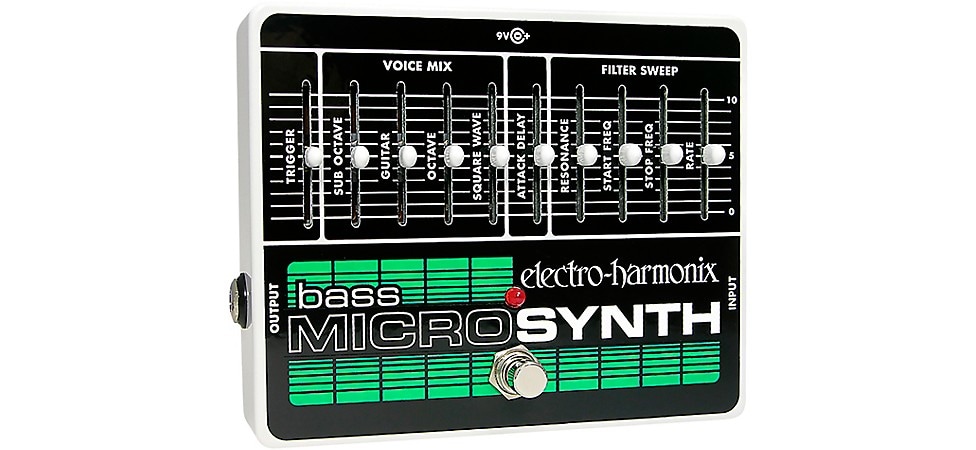
Pictured: Electro-Harmonix Bass MicroSynth
Designed to emulate the sounds of vintage analog synths of the '70s and '80s, the all-analog Bass MicroSynth uses your bass as a signal source to morph, mutate and mangle into glorious electro-madness.
The first step in the process is to take the one bass voice and process it to get four separate sounds—a sub-octave, straight bass sound, an octave above and a square wave at the original pitch. Mixing these together can create worthwhile sounds on its own, but the real magic happens when you process this through the filter section.
The filter section is a sweepable, three-pole resonant filter with sliders for Resonance, Start and Stop frequencies, and Rate of sweep. Before your signal hits the filter, there's also an Attack Delay slider that lets you go from instant attack to a slow volume swell. With a few adjustments, you can come up with a classic synth bass tone or a truly twisted warbling dinosaur war cry. No presets, but half the fun of this pedal is just playing and changing faders on the fly. Add a delay pedal after and you can really get in touch with your inner, weird child.
Wrapping It All Up
There's a lot to choose from here, and we hope we've pointed you in a good direction. We recommend that you relax, experiment and have as much fun as possible in assembling your collection of bass pedals. Once you've got three or more pedals, you'll probably want to check out our articles on building a pedalboard and choosing the right power supply for it.
We're also going to remind you that you'll need some accessories to go along with your pedals. Essentials include power supplies, quality patch cables to hook everything up, a tuner—whether stompbox or headstock clip-on—and spare batteries. You'll also want a proper carrying bag for your pedals, especially if you're not building that full-blown pedalboard system yet. If you've got any questions, we'd also recommend having a chat with one of our knowledgeable associates, either at your local Guitar Center store or at our Call Center. They've been fielding questions about gear for years, and it's a pretty safe bet that most of them have stories about how stuff has gone wrong on gigs or in the studio, and how to solve those problems without panic.
Always remember, no matter how serious you are about it, playing is supposed to be fun. So, relax, enjoy, get out there.


